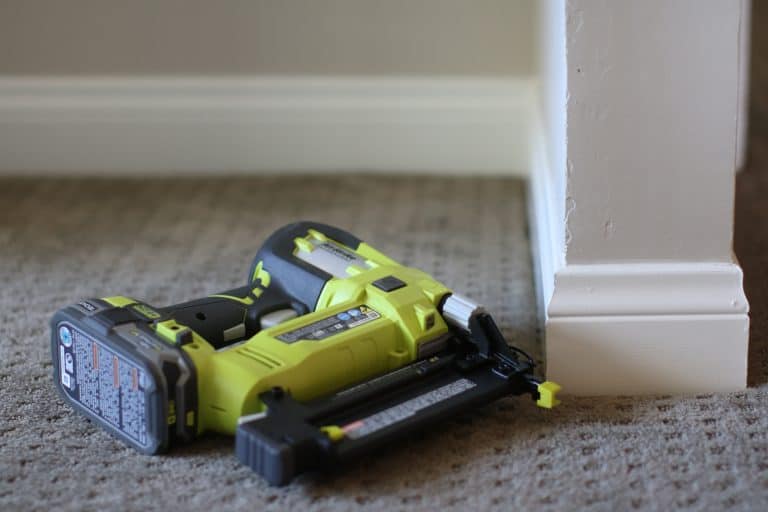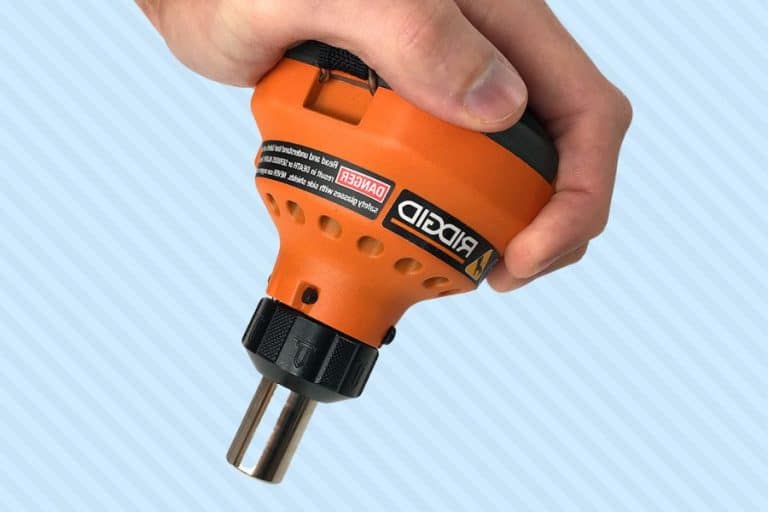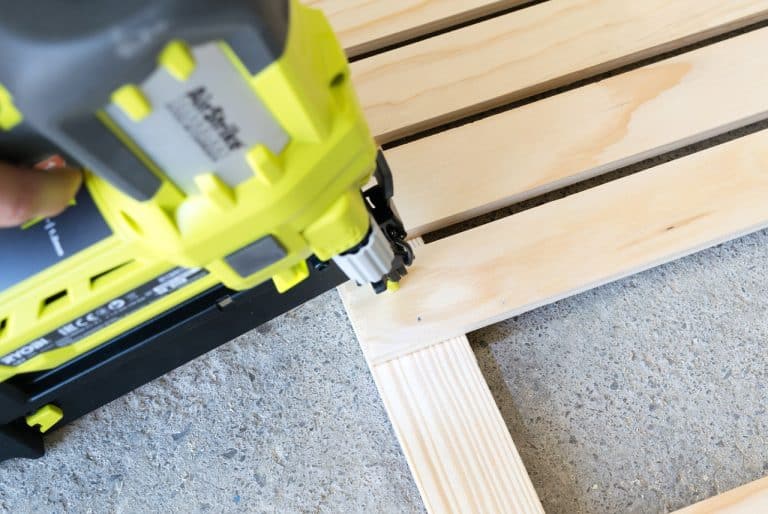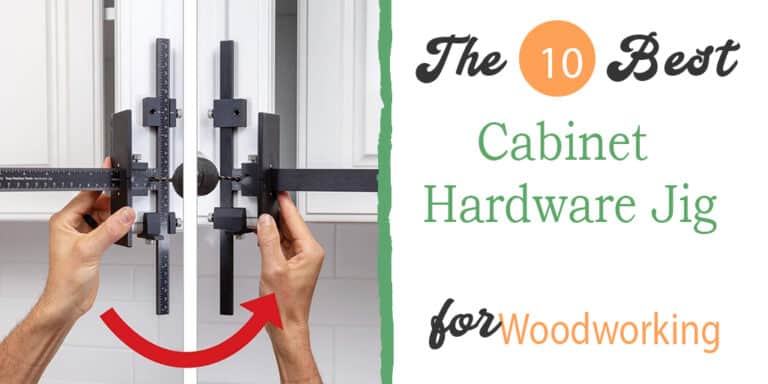A trusty hammer is an important part of the workman’s tool kit, but when you have a large job to do, a nail gun will save time and energy. With the press of a trigger, a nail is rapidly inserted into wood.
No need to worry about hammering the top at an odd angle or getting tired after the first hundred or so nails.
In a construction setting, the nail gun is an essential, efficient tool that can create faster and stronger connections between pieces of wood. There is no wonder that they are incredibly popular both out on a job site, as well as in the home.
Smaller home improvement jobs and woodworking hobbies can benefit from a nail gun.
Contents
How Does a Nail Gun Work
There are two primary actions that a nail gun performs. First, it ejects a nail or brad at high speed. The strength and depth of the nail in the wood are dependent on the type of the nail gun, the type of nail used, and adjustable settings on the gun itself.
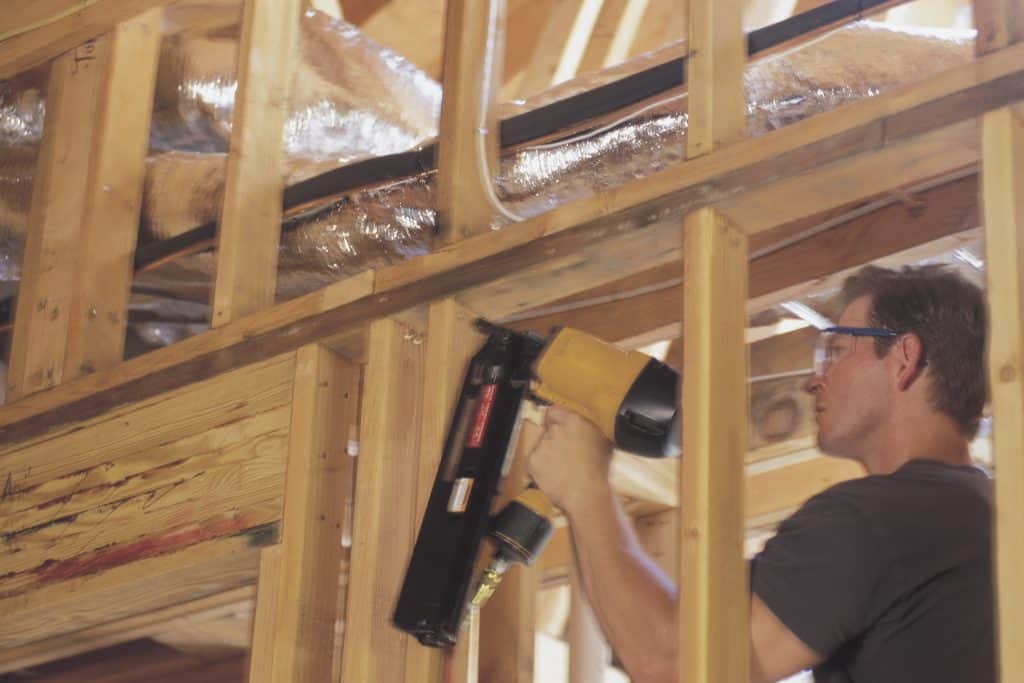
After firing a nail, it automatically reloads the next nail into the chamber so it is almost immediately ready to fire again. The entire process is incredibly fast, so you can emit a high number of nails very quickly.
Nail Gun Firing Mechanism
There are two main types of firing mechanisms in a nail gun. One uses a piston that hammers down on a blade, and the other releases high-tension springs.
The piston mechanism uses pressure behind the piston created by either compressed air from an air compressor, or exploding gas from a replaceable gas canister. As the air or gas pressure is released, the piston hammers into a blade mechanism that slides down a rail with incredible force and hits the top of the nail head.
Spring-loaded nail guns are normally powered by electric motors. The motor puts the pressure on the spring (or springs), and the trigger releases it, driving the nail forward.
Nail guns also have different trigger types. Most nail guns use a standard gun-type finger trigger, while others have a “bump mechanism” that activates when you press the nail gun against the wood. There are also hybrids between the two.
Nail Gun Loading Mechanism
Nails for a nail gun are attached together in a long magazine that is inserted along a track in the gun, normally in front of the handle grip. This magazine automatically feeds the next nail up the track into the chamber, normally with the help of a spring loaded mechanism.
Nails in the magazine are glued together in a process called either paper collated, plastic collated, or coil collated. Paper collated nails are recommended due to their better holding power and safety.
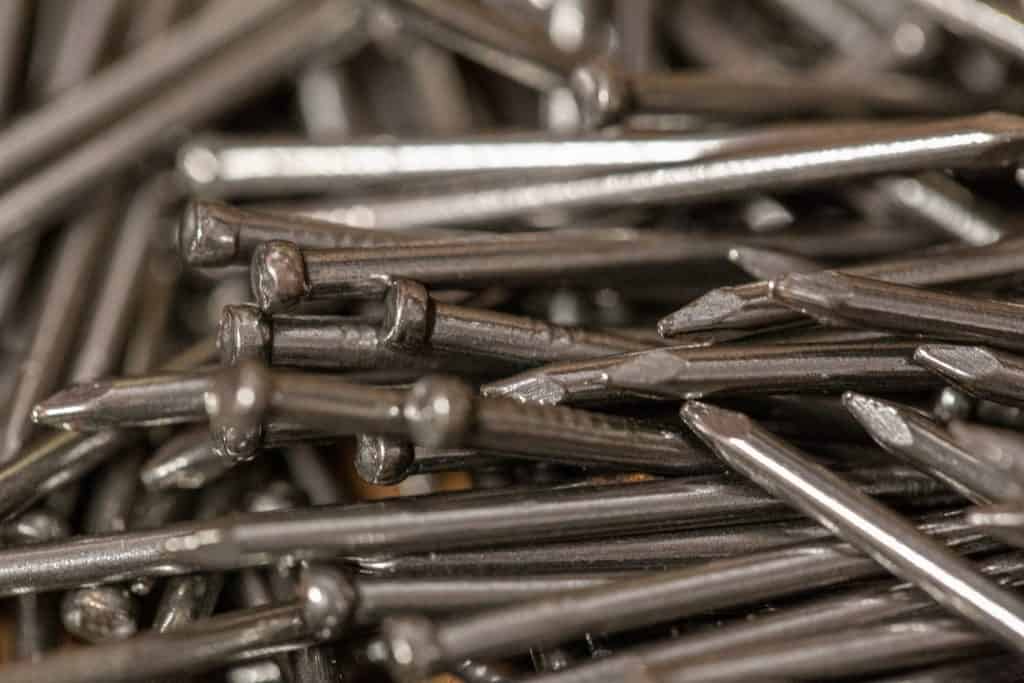
Oil needs to be removed from paper collated nails first, but it does not in plastic collated nails, so some oil is often left on the plastic ones. Plastic collated nails also present the possibility of plastic shards ejecting from the nail gun and causing injury.
Coil collated nails are not in heavy use any more except in professional settings.
Paper collated nails may be more expensive than plastic, but in this case you get what you pay for.
Different Types of Nail Guns
The main difference between the types of nail guns available is how the force that pushes the nails in is generated. The three main types of nail guns are pneumatic, cordless gas, and cordless electric.
How Pneumatic Nail Guns Work
Pneumatic power starts off with pressurized air. The amount of force that can be obtained by compressing air in a small area is incredible. Pneumatic nail guns use this force to quickly push the piston and blade with power.
Pneumatic nail guns cannot compress air themselves. They need to be attached to an air compressor, normally through a rubber or plastic hose. This can be annoying at times when on a job that covers a lot of distance, but the hoses are generally long enough that the compressor doesn’t need to be moved too often.
Air compressors work by forcing air into a compression chamber until it reaches the pressure (measured in PSI) designated by a dial or other setting. Once the proper PSI is reached, the compressor turns off.
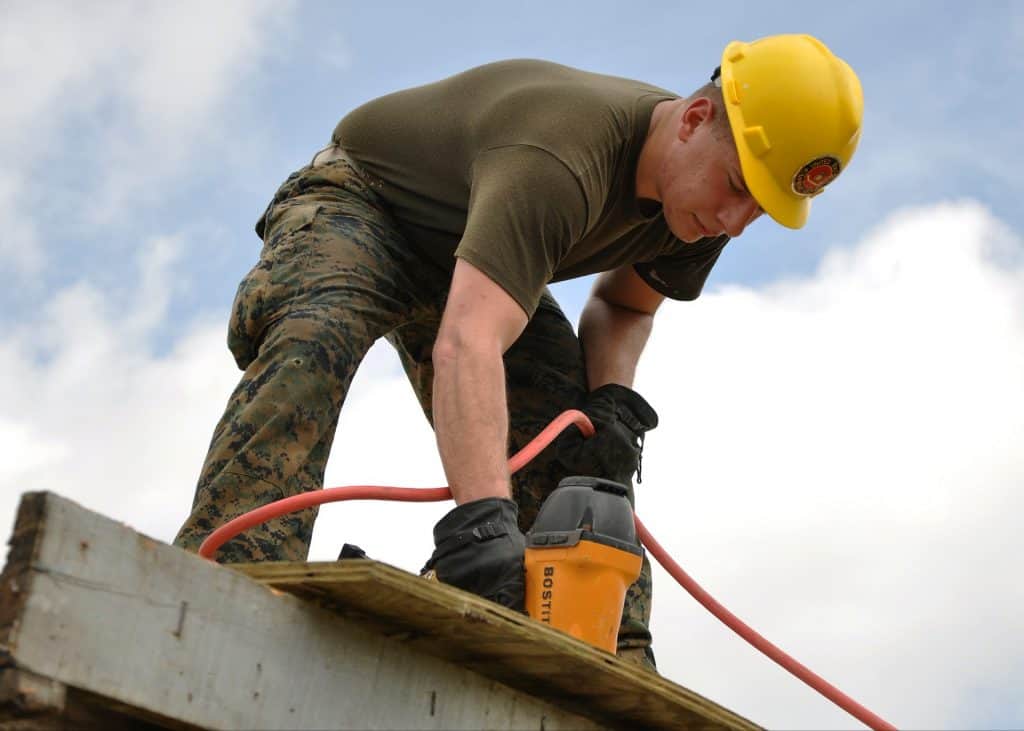
The internal regulator keeps the pressure within a certain range. The more the compressed air is used, the lower the PSI in the compression chamber. When it reaches a specific low point, the compressor kicks back on and increases the PSI back to the optimal level.
Pressure from the compressed air is forced through the hose into the nail gun, and then released into the piston when the trigger is pressed. The piston in turn shoves the blade into the nail, and the nail out of the gun.
Pneumatic nail guns are arguably the most consistent of the different options available, since the compressor will provide continuous power within the required range. Air compressors are also used for other construction applications or even for tasks around the house.
There are compressed air tools for painting, finishing, car maintenance, etc.
Air compressor tools will generally last longer than electric or gas-powered tools since there is one common power source behind them, instead of them being all in one. The prices of pneumatic nail guns are, in general, lower than their other counterparts, but you will also have to consider the cost of the air compressor.
How Gas Powered Nail Guns Work
The mechanical action of a gas powered air gun is very similar to the pneumatic air gun, the main difference is how it generates power to drive the piston. Instead of compressed air, the chamber fills with combustible gas.
When the trigger is pulled, a spark from either a spark plug or electrical source ignites the gas, producing pressure much like in a car engine.
Compressed gas is provided in fuel cells or canisters, normally butane or liquid petroleum. Since they are completely self-powered, gas powered nail guns are much more portable than pneumatic guns. The gun itself, on the other hand, is normally more bulky and heavier than a pneumatic nail gun.
Another drawback is that the gas canisters run out and need to be replaced. On a big job, this can get tiresome, and if you’re stuck without a backup it can end your work day prematurely.
How Battery Powered Nail Guns Work
Instead of a piston driving a blade forward, electric nail guns produce their kinetic energy with springs.

There is a powerful motor within an electric nail gun that pulls a spring back. This stores energy until the trigger is depressed. The spring is then released, driving a hammer at the top of the nail, pushing it into wood.
Power to the motor is supplied by rechargeable battery packs. These electric nail guns are usually fairly light and easy to move around, but the power is much more limited than pneumatic or gas powered nail guns. They are also quite expensive for the amount of force they provide and their lifespan.
Related: See if you actually need an electric staple gun for your project.
Conclusion
The basic action of a nail gun is the same across the different types of tools, in that force is applied to the head of a nail, the nail is ejected, and a new nail replaces it. The way that force gets to the nail, however, can be very different depending on if the nail gun is powered by compressed air, gas, or electricity.
